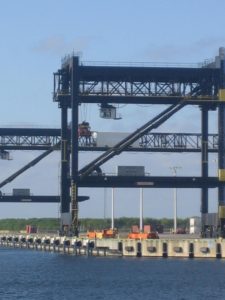 The designation of Critical Urban Freight Corridors (CUFC) to be included in the National Highway Freight Network was a key topic at a recent statewide meeting between FDOT and the MPOs. CUFCs are public roads in urbanized areas which provide access and connection to the primary highway freight system for ports, public transportation, or other intermodal transportation facilities.
The designation of Critical Urban Freight Corridors (CUFC) to be included in the National Highway Freight Network was a key topic at a recent statewide meeting between FDOT and the MPOs. CUFCs are public roads in urbanized areas which provide access and connection to the primary highway freight system for ports, public transportation, or other intermodal transportation facilities.
At the September 6 MPO Board meeting, the MPO took action and recommended that portions of Causeway Boulevard and US 41 connected Port Tampa Bay should be designated as a Critical Urban Freight Corridor. This important corridor connects Port Tampa Bay, a major economic engine for our community, to I-4 and I-75.
With more than 15,000 jobs in this key economic space, this corridor is congested for up to 10 hours per day and is periodically blocked by freight trains. Truck traffic is expected to grow to 4500 trips per day by 2050, and it is already exhibiting both freight and commuter congestion. Already a high priority in Florida Freight Mobility & Trade Plan, this corridor is also the highest priority freight need in the MPO’s Imagine2040 Plan.
Once added to the list of Critical Urban Freight Corridors, new funding opportunities become available. The FAST Act provides $60 million more a year to Florida for freight improvements, plus there’s a new grant program offering $800 million nationally for large freight projects costing over $100 million. This designation positions the Port and the Tampa Bay Region for economic prosperity.

